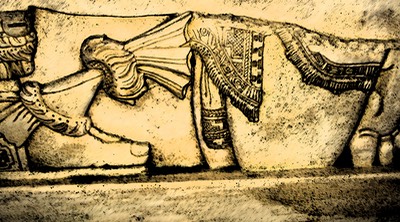Reflexology Communicates
Reflexology is unlike any other modality, and goes beyond the simple therapy of touch. Although, I teach techniques, and a logical sequence in Levels 1 - 3 of my 150-hour reflexology certification program, it is actually the skills of communication that I hope reflexology students will develop most, and leave with, when they are certified at Level 6.
The dictionary definition of the word reflex that best supports this wish is that a “reflex” is an action that is “reflected”. Thus, the action of applying pressure to specific points can be likened to a conversation – especially when there is a response to the work.
If reflexology is truly a holistic therapy as I teach it, then it must work on all levels, be they emotional, physical or mental. In this regard, the reflexologist should be viewed as a “detective” of sorts, building a bigger, and clearer picture of a client, and their needs, from the information they receive.
Besides the initial consultation, where information about a client’s past, and present are requested, I also use a Treatment Record, which essentially “maps” sensitive areas on the feet or the hands. Using these tools provide a solid foundation for the actual reflexology work that follows. Gathering this information creates an important link between the practitioner and client, and enables reflexology treatment, and progress towards homeostasis, to be even more effective.
How sensitivity is determined, is through clear communication, between the client and reflexologist. In this regard, when a client is receiving a foot treatment for the first time, I ask them to indicate any sensitivity they feel from the work. Once this happens, the point is “recorded”, and pressure adjustments are made. This is most necessary at the first treatment. As treatments progress, the reflexologist is able to rely on his or her intuition, and treat more thoroughly those areas they feel in need of attention.
It is also important that the reflexologist explain to the client what to expect in terms of pressure, and sensitivity from a treatment. Once this is established, the client becomes an active participant in his or her own healing process. There have been instances when I have been working on a certain reflex point or area, and as soon as I explain what the reflex corresponds to, the client is immediately able to make their own connection to a past injury, or trauma.
For example, if I inform a client that I have picked up sensitivity in the neck, shoulders, and jaw, this information might relate to the fact that they have recently had a lot of dental work, or that they suffered whiplash in an accident as an adolescent.
Occasionally, I treat clients who have had an unfavorable experience of reflexology. This can be the result of the reflexologist being insensitive to the needs of the client, working too “mechanically”, or using too much pressure. However, more often than not, this is the result of poor communication skills - be they listening, confirming, reassuring, explaining or informing.
Being well informed is important for both the reflexologist, and the client. At the end of the treatment, providing feedback of the treatment will further empower a client to understand which areas have been detected as sensitive, and how they relate to any conditions or symptoms of “dis-ease” that might exist.
Compared to 13 years ago when I began teaching at New Mexico Academy of Healing Arts, reflexology has become a more accepted therapy in New Mexico and the United States. The profession is growing, and more people than ever before are choosing reflexology as alternative therapy.
However, the fact remains that it the ability of the reflexologist to understand how best to communicate with the client that will determine the true efficacy of reflexology. These skills are taught throughout the 150-hour reflexology certification program, and ensure that graduates of it practice and promote reflexology to the highest standards.
By Jim Williams B. Ed, MAR
